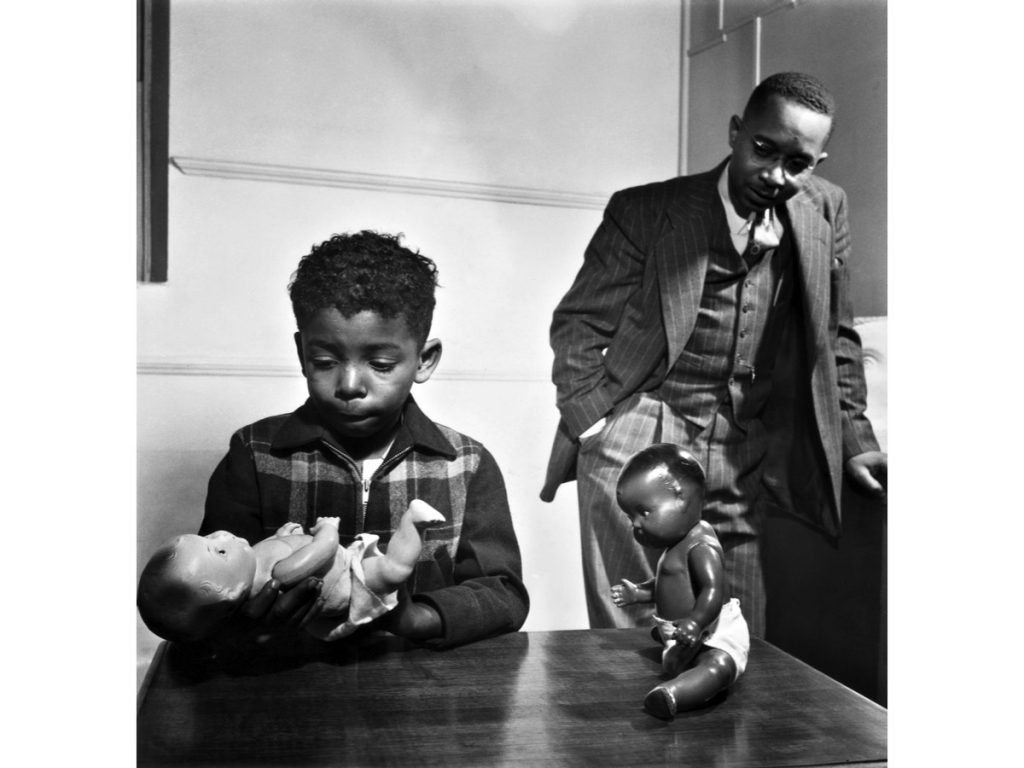
A set of famous experiments from the 1940’s demonstrates how children reflect the information they collect about race. Psychologists Kenneth and Mamie Clark conducted these studies, often called the “doll test.” The Clarks used Black and White toy dolls to talk to young kids about race. Their experiment showed that children understand some aspects of racial inequality. And this influences how they feel about themselves and others. The doll experiments have been repeated a number of times by many researchers. Even in our current ‘post-racial’ era, researchers find similar results. On the next page, you’ll watch a short clip of a version of the Clarks’ Doll Study made just a few years ago. As you will see from the video, children are very aware of society’s beliefs about race. In fact, the Clarks’ Doll Studies were used as evidence of the harmful effects of segregation in the landmark Supreme Court case Brown v. Board of Education in 1954. The case ultimately found that “separate, but equal” schooling was in fact unequal and hurtful.
-
- Bias
- the belief that some people or ideas are better than others, usually resulting in unfair treatment
- Biological race
- physical racial features such as skin color, hair textures, and facial features
- Explicit racism/bias
- racism that is plainly expressed through words and or actions
- Implicit racism/bias
- racism that hides in our unconscious biases and gets expressed in our actions
- Racism
- the beliefs and practices that uphold and reinforce inequalities based on race
- Social identity
- a person’s sense of self that is based on group membership
- Social race
- The social norms, attitudes, beliefs and behaviors that accompany racial groups
- Systemic racism
- policies, practices, and laws that reinforce social inequalities by discriminating against groups of people, either directly or indirectly, and limiting their rights